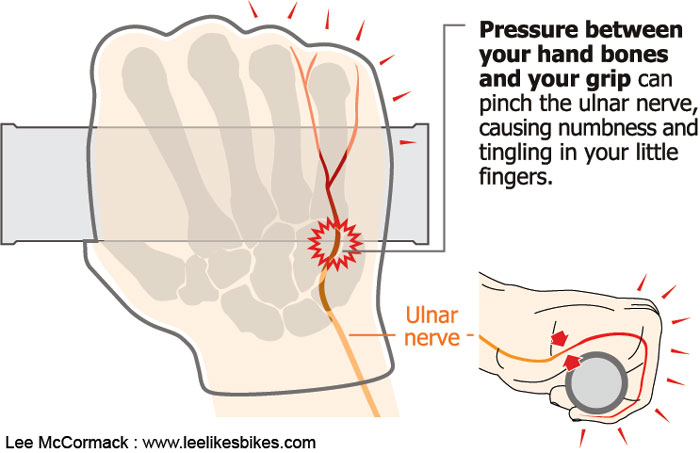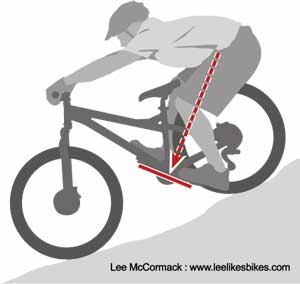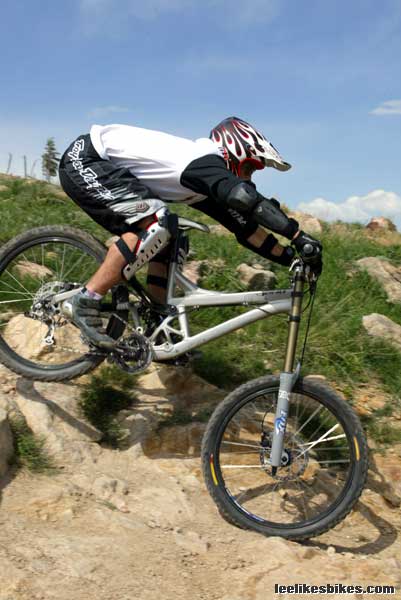East Coast tech: My hands hurt!

Hey, Lee. Your answer to my burnin’ quads question a while ago was really helpful, so here’s another one: hand fatigue. I recently moved to New England, and the terrain around here is steep, slow and technical, and I find myself relying on my rear brake a lot more than I’m used to. Lately my right hand has been getting so fatigued that I’ll have to stop and rest in the middle of a descent. I’ve noticed a loss of grip strength off the bike, too. I put on a bigger rotor, and tried moving my levers around on the bar, but nothing really helps. Any suggestions?
Jesse
Hey Jesse,
 Lee Likes Infographics dot com |
It sounds like you’re still riding defensively. To all of you who Like Bikes(tm), some of this will sound familiar:
Ride with your feet. I’ll bet you’re too far back, and you’re pulling on your bars. This reduces front traction and tires you out. It also encourages bumps to buck you forward. Not cool. Practice riding with heavy feet and light hands. And roll your hips back to engage your glutes — Remember?
Use both brakes! If you’re braking properly, with your weight driving through your bottom bracket then to your wheels, your front brake provides about half of your braking power. If you’re stiff and fearful and using only your rear brake, you’re getting way less than half of your potential braking power. Whenever you brake to slow down (rather than to steer), use both brakes evenly.
 Hot DH Pumping Action at Left Hand Canyon. Compare with the diagram. |
On or off. I’ll also bet you’re dragging your brake(s). Look ahead. Slow way down before the tough section — you can almost stop for all I care – then coast through the goodness. This is so important: Constantly scan the terrain, and choose smooth spots to brake. If you must brakes across roughness, you must continually adjust your position so the net force goes into your pedals.
Pump it. Yes, pumping is a great way to increase speed on rough terrain. And it’s also a great way to increase control. When you actively unload frontsides and load backsides, your wheels stay in contact with the ground — instead of bouncing willy nilly and beating you up.
Loss of grip strength. Not cool. My dad is a doctor, which qualifies me to say this: It’s possible that you’re chronically overtraining your grip muscles, and that’s why you feel weak. It’s possible that you’re inflaming one of your nerves. It’s also possible that you’re hurting yourself. Work out all the setup/technique issues. If you’re still hurting, talk to a real doctor. Not a son of a doctor. 🙂

|
More about brakes, arms and hands:
– I feel sketchy and I want better brakes!
Have fun out there. When you get this thing dialed, you’ll use your whole body in an integrated way, and no one part will hurt more than the others.
Braaap!!!!
— Lee

Comments are closed.